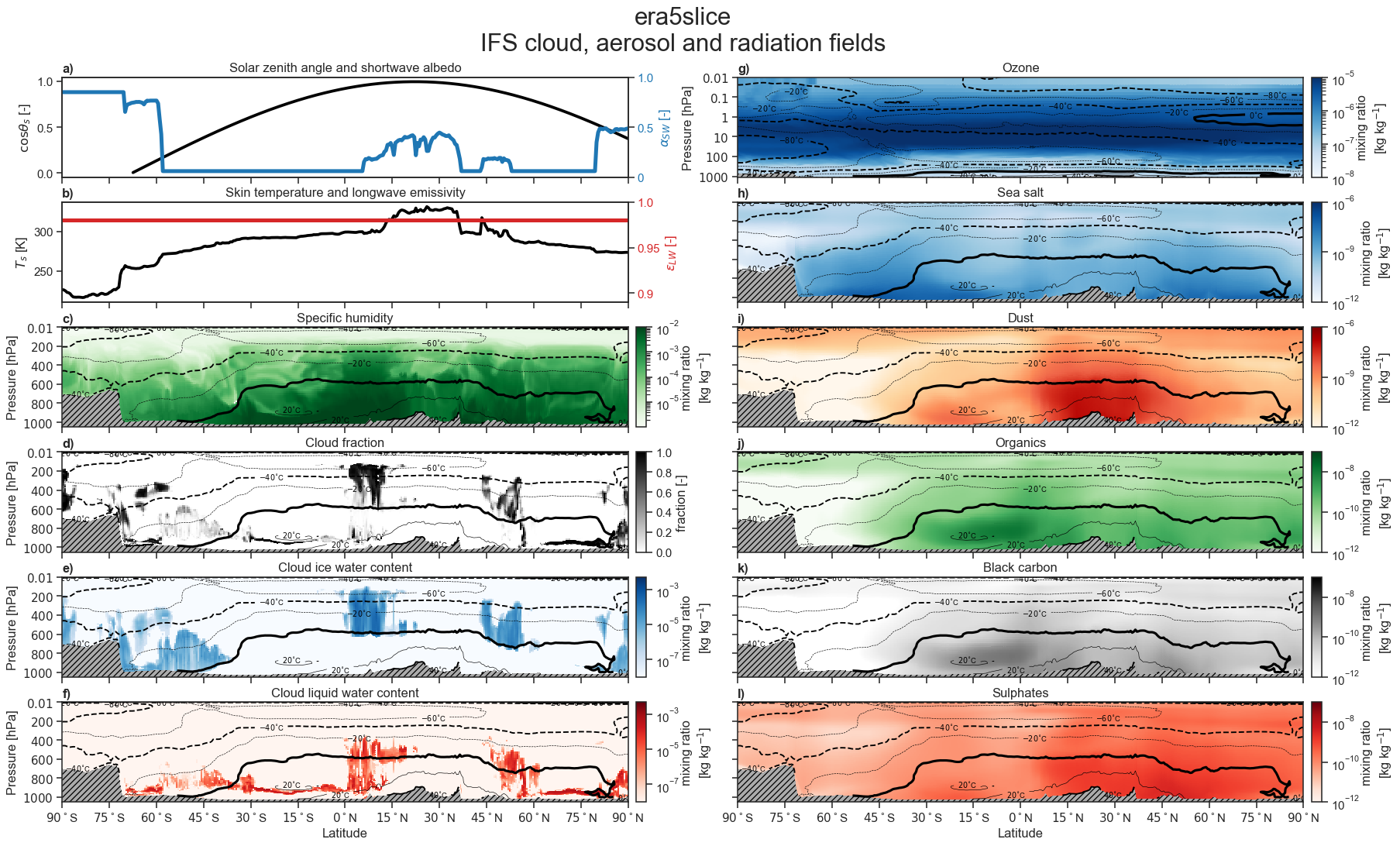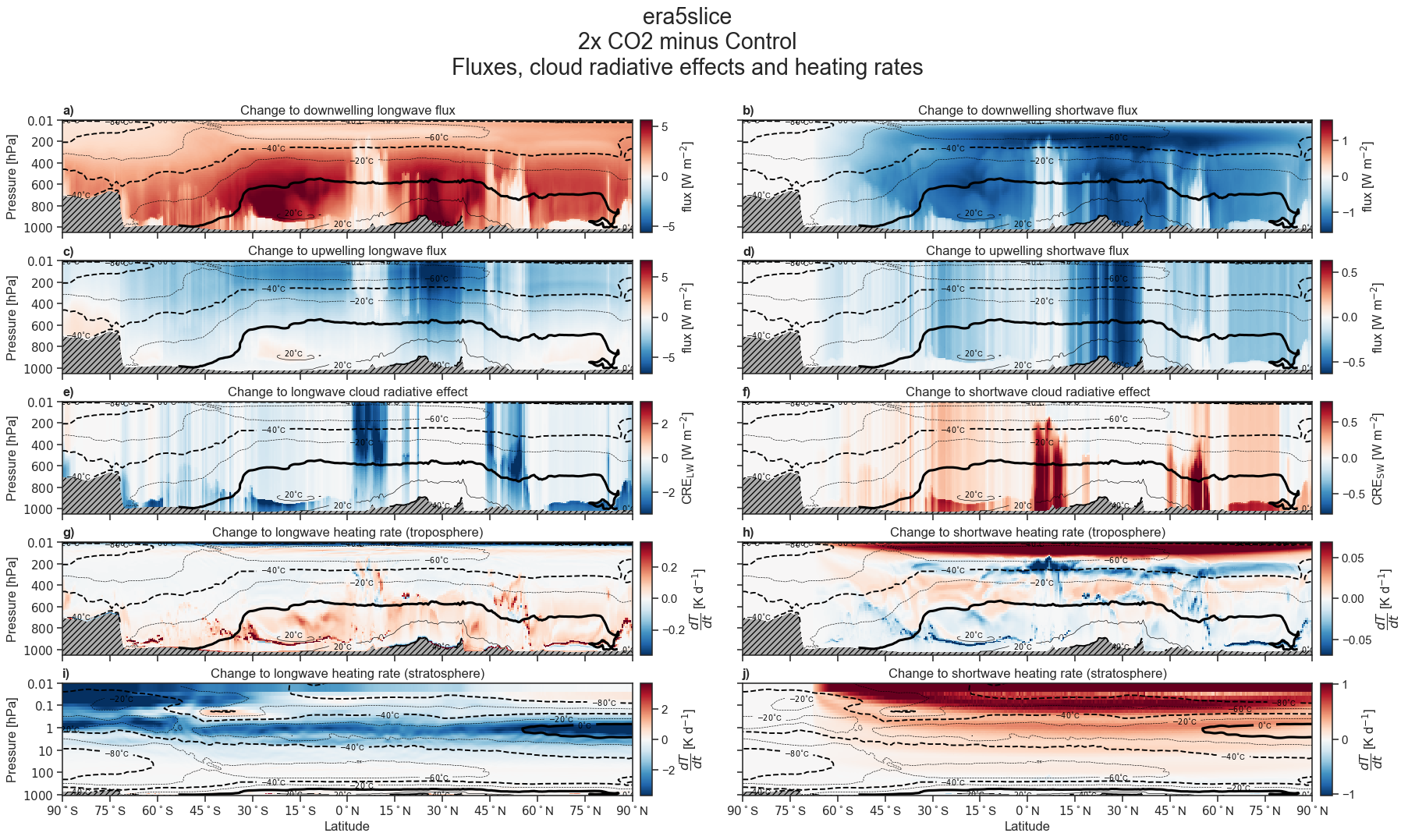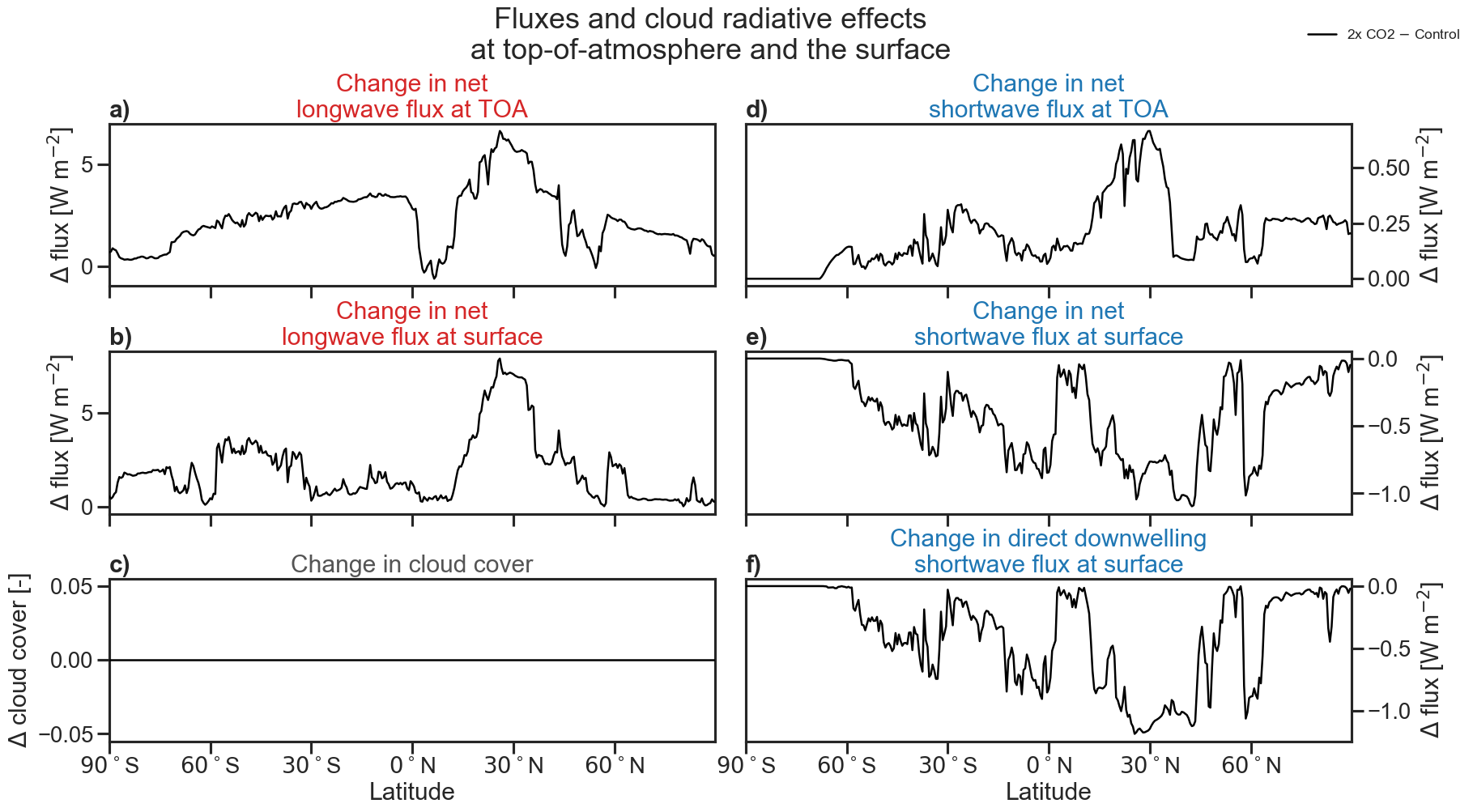To help new users of the offline ecRad radiation scheme become familiar with its capabilities, a set of practical exercises has been devised and added to ecRad version 1.3. Since 1.4.1 it includes a Jupyter notebook interface. It makes use of a slice through the atmosphere from the North Pole to the South Pole, taken from the ERA5 reanalysis dataset at 5 degrees east at 12 UTC on 11 July 2019. The slice includes Saharan dust, marine stratocumulus, deep convection and Arctic stratus. The main fields are shown here:
In the control experiment, ecRad is run on these fields using the Tripleclouds solver (a noise-free but slightly slower alternative to the operational McICA solver). A number of Python-3 scripts (written by Shannon Mason) are provided to enable the user to visualize the output and to compare two or more ecRad runs with different settings. The fluxes and heating rates for the control run are shown below:
In the first experiment, a Fortran namelist is used to rerun ecRad but with the concentration of carbon dioxide doubled from the 2019 values. The following plot shows the change to fluxes and heating rates:
We may also plot the change to the net fluxes (down minus up) at top-of-atmosphere and the surface; in this case this is the instantaneous radiative forcing associated with doubling carbon dioxide:
The practical instructions describe many other experiments that can be performed, for example:
- Reduce ozone concentration and explain why this should cool the Earth system
- Double methane concentrations and compare the per-molecule radiative effect of methane to carbon dioxide
- What is the effect of turning longwave scattering by clouds off?
- What is the effect of removing sub-grid cloud heterogeneity?
- Set the cloud overlap to random and explain how it changes the fluxes
- Compare the Tripleclouds to the McICA solver, including their computational cost, and explain the pros and cons of using each in an operational context
- Investigate the impact of the uncertainty in ice optical properties by swapping the default Fu ice optics model for the Yi model
- Use the SPARTACUS solver to investigate the longwave and shortwave 3D radiative effects
- Turn aerosols off and use the results to explain how Saharan dust affects both daytime and night-time surface temperatures
- What would be the impact on climate of turning all aerosols into black carbon?



